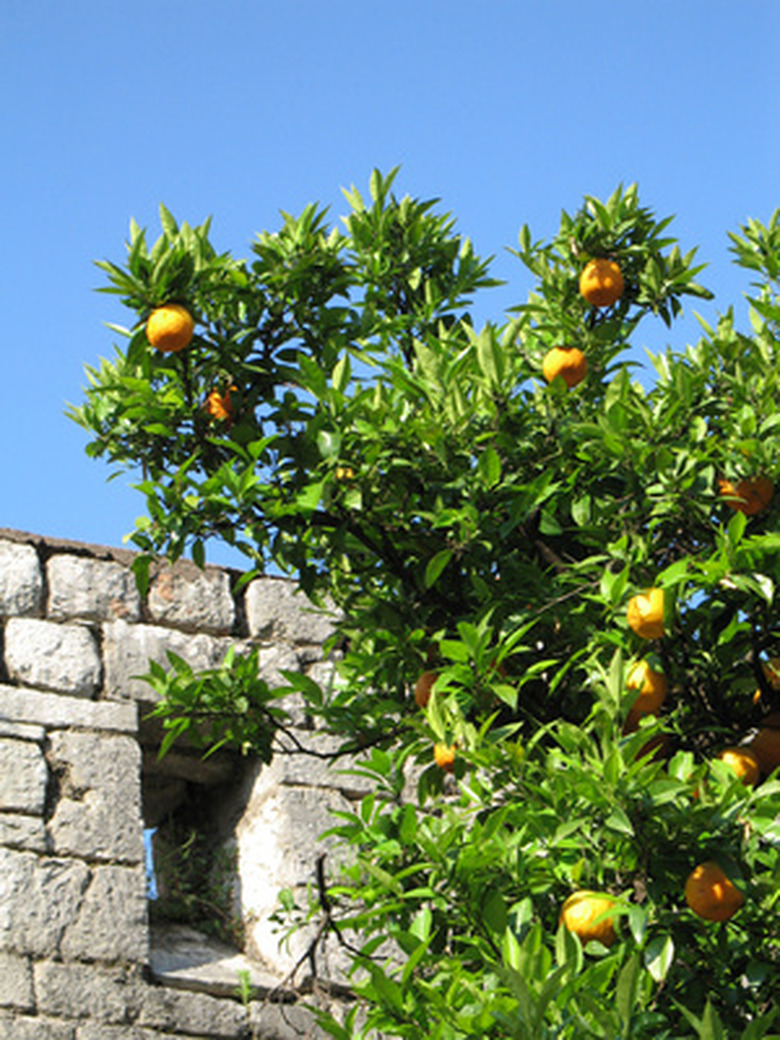How To Graft An Orange Tree To A Lemon Tree
Grafting is the process of merging a young, fruit-bearing limb to an older, established fruit tree for the purposes of reinvigorating the older tree. Plants that are in the same family but of a different variety can be successfully grafted. With regard to citrus, any type of citrus fruit can be added onto any other tree, such as an orange to a lemon tree. The young tree should be disease free, and grafting will be more successful if both trees are healthy.
Step 1
Select the budwood from the desired variety of orange tree and remove it from the branches. The best budwood is new growth with multiple leaf buds, as well as its accompanying bark. The tree that the growth is taken from should be disease free to avoid infecting the lemon tree.
- Grafting is the process of merging a young, fruit-bearing limb to an older, established fruit tree for the purposes of reinvigorating the older tree.
- The tree that the growth is taken from should be disease free to avoid infecting the lemon tree.
Step 2
Saw off a limb from the lemon tree, leaving behind 1 foot of the branch.
Step 3
Cut a 2-inch cleft into the center of the lemon tree's limb using a cleft knife.
Step 4
Cut the orange budwood with a grafting knife so that it forms a V-shaped point at the bottom. The cut should be no longer than 1 1/2 inches.
Step 5
Press the orange budwood into the lemon limb until the green middle pieces match up.
Step 6
Cover the entire graft in grafting compound.
Step 7
Watch for signs of growth on the lemon tree. If the orange tree's buds are growing but have not formed leaves within 8 weeks, remove any lower branches from the lemon tree to encourage more nutrient dispersal to the orange branch.
- Saw off a limb from the lemon tree, leaving behind 1 foot of the branch.
- Cut the orange budwood with a grafting knife so that it forms a V-shaped point at the bottom.
Lemon Tree
A poor growing location causes the gradual decline of a healthy young lemon tree. These citrus trees grow well in poor soil and even tolerate sandy or clay soil. One of the most important soil properties is good drainage. Look for damaged leaves and fruits as well as insects. For localized infestations, use a strong spray of water to knock the pests out of the tree. Temperatures down to 20 degrees Fahrenheit kill flowers, fruit, leaves and wood. Use a lightweight soil mixture when planting, and feed the tree monthly with a high-nitrogen fertilizer. The best location is within 6 feet of a sunny window and away from heat sources, which dry the soil out too quickly.
- A poor growing location causes the gradual decline of a healthy young lemon tree.
- The best location is within 6 feet of a sunny window and away from heat sources, which dry the soil out too quickly.
Things Needed
- Budwood from an orange tree
- Saw
- Cleft knife
- Grafting knife
- Grafting compound
